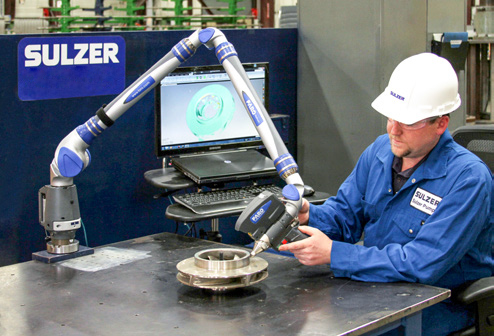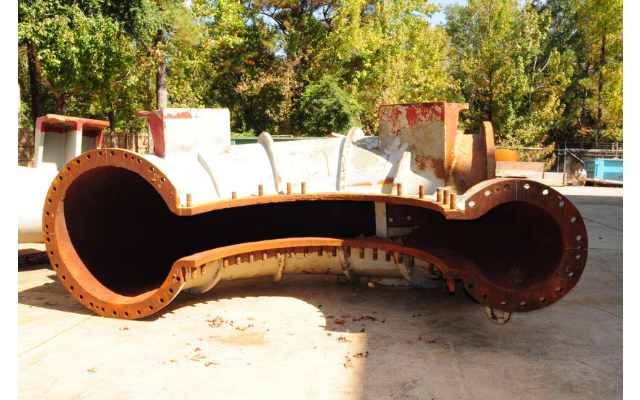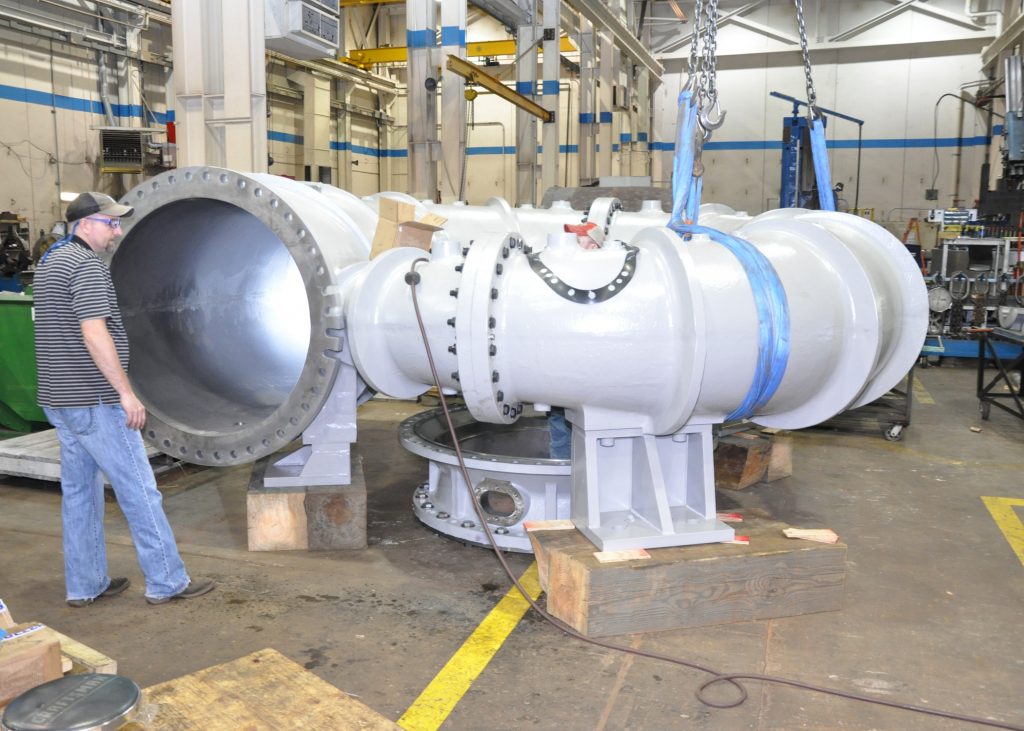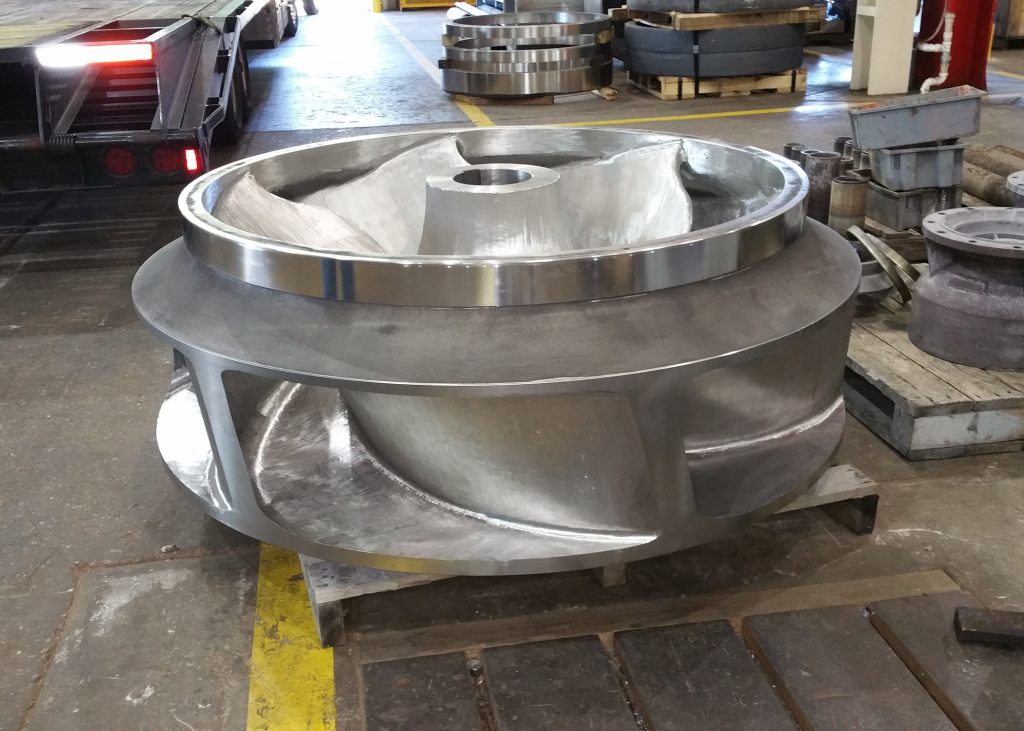Contributor: Sulzer
Large pumps have generally been designed to perform for decades, making them a valuable asset that requires periodic maintenance. When the performance of an older pump begins to deteriorate, it may be a sign that the impeller is worn or the volute has become corroded, and by the time this happens, finding new parts can be a considerable challenge. Fortunately, modern design techniques and manufacturing processes can create a vast range of components using reverse engineering.
Jesse Jackson, Customer Services Manager, at Sulzer’s Mobile Service Center in Alabama, looks at what can be done to resurrect an ageing pump asset.
Over the years, pump manufacturers have created many different designs of pumps for a whole host of applications and each one used the technology available at the time. As the older models continue in service, access to spare parts becomes more and more difficult until the manufacturer has none available and they need to be created on a one-off basis. In some cases, the company may have gone out of business but the pumps still require continued maintenance.
In cases where the original equipment manufacturer (OEM) is available, it may be possible to order new components, even if they have to be manufactured from the original drawings as a special build. The advantage here is the drawings, which provide all the necessary detail to create a new component. The problem is usually the lead time. Most manufacturers’ fabrication facilities are dedicated to the current pump models and reassigning them to a one-off task may incur an additional delay.
The second issue with this approach can be cost. OEM parts are unique to their products and manufactured to certain standards, so carry a price premium. As the stock of spare parts for the older pumps diminishes, so creating new parts has a higher cost threshold, which can increase prices further.
Recreating an original design
The alternative is to find a third party with the engineering capability to create a new component, without drawings or reference material. In the past, this has been common practice for less intricate components, but the complex geometry of pumps has made this task very difficult. The advent of sophisticated coordinate measuring machines, 3D solid modeling software and laser scanning has made it possible to recreate complex designs.
In addition to new manufacturing technology, there have also been significant developments in materials. Older pumps are often created using materials that cannot be easily welded such as cast iron and bronze. In many cases, the original materials can be upgraded; the replacement of bronze with stainless steel is a common occurrence.
Pumps, especially large ones, are often used in abrasive or corrosive conditions, which can significantly reduce the expected operational life of components such as the impeller. Upgrading the base material causes a relative increase in the initial repair cost, which will improve the service life and reduce the overall cost of ownership.
In addition to the materials used to create the pump, the detailed design can also be improved as part of this process. Since the original pump was installed, the purpose or performance requirements may have changed and this can be addressed as part of the design process when creating a reverse engineered component. The hydraulic design is critical to the performance of the pump and the latest design software and computational fluid dynamics (CFD) can be used to deliver the optimum design.
Improved manufacturing processes
Modern technology has also improved the manufacturing process. It’s no longer necessary to build a pattern and ship it to the foundry; a computer model can now be emailed. Foam cores and patterns can be made for one-off components, which reduce both the expense and the time to complete the process. In addition, the advent of 3D printing can also be used to create molds for smaller components, again speeding up the process to create replacement parts.
Delivering reverse engineered projects still takes time, but the process can be estimated accurately, allowing equipment owners the opportunity to plan any process shutdowns and minimize the impact of the maintenance project. In some industries, such as power generation, a pump failure may have to be rectified with a temporary solution until a scheduled outage, when the pump can be removed and repaired with a more robust solution. In cases such as this, the detailed measurements and modeling can be done during the initial repair process, allowing the new component to be manufactured before the scheduled outage to minimize downtime.

By using sophisticated coordinate measuring machines, 3D solid modeling software and laser scanning has made it possible to recreate complex designs
Rejuvenation after 100 years’ service
Sulzer has adopted all of the technological advances in pump component manufacturing and applied them to projects around the world. Recent examples include a pump that was built in 1912 and used as a dry dock pump. It had suffered considerably from corrosion to both the volute and the impeller, but there was no possibility of finding a replacement part ‘off the shelf’.
With a vertically driven impeller, the volute weighed 25,000 lbs (11 tonnes) and was built in two halves, while the impeller itself weighed 5,000 lbs (2.25 tonnes). Pump engineering specialists from Sulzer accompanied site service engineers to help with the removal of the pump, prior to its shipment to the Mobile Service Center, where brand new components were manufactured.

The hydraulic design of the pump can be improved with the latest design software and computational fluid dynamics (CFD)
A similar service was provided for a Westinghouse cooling pump that needed a new impeller and matching suction bell. The new impeller was manufactured from 316L stainless steel and weighed 5,000 lbs (2.25 tonnes), while the new suction bell was fabricated from 304L stainless steel. The matched components were installed during a planned outage at the power generation plant.
These, and many other examples, show that it is possible to deliver precision-crafted replacement parts for large pumps cost effectively in a much shorter time frame than the OEM, if they are still in existence. Furthermore, advances in design technology enable significant improvements in performance and durability to be included, reducing the long term cost of ownership.
About Sulzer:
Sulzer is the leading worldwide, independent service provider for the repair and maintenance of rotating machines including turbomachinery, pumps and electro-mechanical equipment. With a global network of over 150 technically advanced manufacturing and test facilities, Sulzer offers a collaborative advantage that delivers high-quality, cost-effective, customized and turnkey solutions, providing its customers with the peace of mind to focus on their core operations.
Sulzer Rotating Equipment Services, a division of Sulzer, can accommodate all brands of rotating equipment including turbines, compressors, generators, motors and pumps. With an enviable track record, dedicated teams of on-site engineers provide best-in-class solutions to ensure that the most effective service is delivered.
Sulzer is dedicated to providing superior service solutions to a range of industries including power generation, oil and gas, hydrocarbon and chemical processing, water and air separation. Every solution is customized to suit the business needs of each application – whenever or wherever that may be.
With a long history of providing engineering service support, Sulzer is headquartered in Winterthur, Switzerland where it began in 1834. Today, with sales over US$ 3 billion and with approximately 15,000 employees, the Sulzer footprint spans across the globe. The core aim is to deliver a flexible and cost-effective service that optimizes customer operational efficiency and minimizes downtime.
For more information on Sulzer, visit www.sulzer.com







